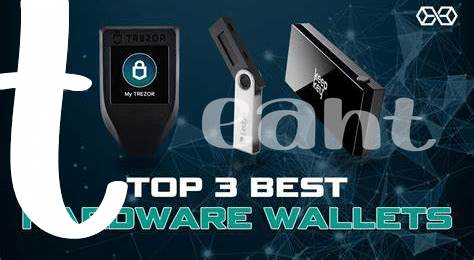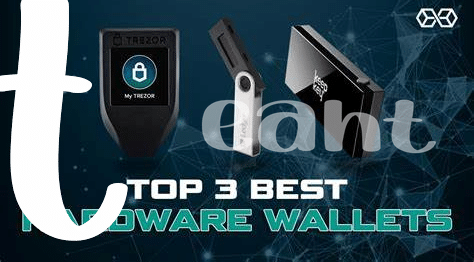What Is a Hardware Wallet? 🗝️

Imagine having a super-secure safe where you can store your Bitcoin, away from the prying eyes of the digital world. That’s what hardware wallets are – little devices that keep your digital money safe. Unlike the wallet in your pocket or an app on your phone, these gadgets are dedicated solely to protecting your cryptocurrency. Think of it as having your own personal vault that’s immune to online hackers because it’s not constantly connected to the internet. With the push of a few buttons, you can access or move your Bitcoin, all while keeping it locked away from digital threats. It’s a nifty piece of technology that blends physical security with digital convenience, making sure your digital gold stays safe and sound.
Here’s a quick look at how hardware wallets compare to other storage methods:
| Method | Security Level | Convenience | Cost |
|—————–|—————-|————-|——-|
| Hardware Wallet | High | Moderate | $$ |
| Software Wallet | Medium | High | Free |
| Paper Wallet | High | Low | Free |
| Exchange Wallet | Low | High | Free |
This table helps underline the balance that hardware wallets strike between maintaining top-notch security and offering a decent level of user-friendliness, all for a reasonable price.
Why Use Hardware Wallets for Bitcoin? 🔒
Imagine your precious Bitcoin tucked away safely where no hacker can reach it, like a treasure chest buried on a deserted island. That’s what hardware wallets offer—security you can touch. Unlike digital wallets, which live on the internet and can be targets for savvy cyber pirates, hardware wallets are physical devices. They are like secure USB sticks that hold your Bitcoin offline, away from the prying eyes and fingers of the online world. This means even if a hacker manages to invade your computer, your Bitcoin stays safe and sound, protected by layers of physical and digital security only you can unlock. Plus, in an age where digital breaches are becoming more common, the peace of mind that comes with knowing your digital wealth is secure in a physical form is priceless. Hardware wallets bridge the gap between the convenience of digital currency and the security of having something tangible to protect. For those looking to explore deeper into the digital currency realm, such as insights on https://wikicrypto.news/the-rise-of-crypto-philanthropy-a-closer-look, understanding hardware wallets is a fundamental step in safeguarding your digital treasures.
Inside Looks: How Do They Work? 💡

Imagine you’ve got a little treasure chest, much like the ones in pirate stories, but instead of gold coins, it’s designed to keep your digital treasure, namely Bitcoin, safe. These treasure chests are what we call hardware wallets. They’re special because unlike the wallets in your phone or computer, they’re not always connected to the internet. This means hackers have a much harder time getting to your digital gold. When you want to send some Bitcoin to a friend or make a purchase, your hardware wallet checks with you first. You physically confirm the transaction right on the device. It’s like having a tiny, super-secure bank right in your pocket, where only you have the key. 🗝️💼🔑 This magic happens through clever coding and technology, ensuring no one but you can access or transfer your digital coins.
The Benefits of Physical Vs Digital Security 🔐

Imagine you have a treasure chest, and inside, you’ve got all your precious gems – or in this case, your Bitcoin. Now, you have two options to keep this chest safe: you can either go for a strong, unbreakable safe (physical security) or a high-tech security system with passwords and biometrics (digital security). Physical security, like a hardware wallet, is like having a safe where you control the key. It’s tangible, and you can feel it in your hands, giving you a sense of control and ownership. Unlike digital methods, where a computer glitch or a hacker could spell disaster, your treasure stays safe and sound in its physical vault.
On the other hand, digital security is like having an invisible shield; it’s there, but you can’t touch it. It’s convenient and fast, allowing you to access your treasure from anywhere in the world. But, just like anything digital, there’s always a risk. And with Bitcoin becoming more popular, understanding these risks and how they tie into the relationship between bitcoin and the dark web market trends is crucial. So, when you’re setting up your defense against the digital pirates out to find your treasure, choosing between a physical chest and an invisible shield depends on where you feel your gems are safest.
Setting up Your First Hardware Wallet 🛠️
Diving into the world of Bitcoin and deciding to set up your very first hardware wallet is like embarking on a thrilling adventure to protect your digital treasure. Imagine it as getting a high-tech safe where only you know the code. The setup process might seem complex at first glance, but it’s actually quite straightforward. It starts with unboxing your little gadget, which is your key to a new level of security. Then, you typically connect it to your computer or phone, often via USB or Bluetooth. This is the moment where the magic begins; you’re prompted to create a new wallet or import an existing one, guiding you every step of the way through clear and simple instructions on the device’s screen or a companion app.
The real heart of the setup lies in the security measures, especially when you jot down your recovery phrase. This is like the master key to your digital vault; a series of words that you’ll need to write down and keep somewhere ultra-safe. If you ever lose your hardware wallet or forget your pin, this phrase is your only way back in, so treat it like gold. Below is a simple table outlining the basic steps in setting up your hardware wallet:
| Step | Description |
|---|---|
| 1. Connect | Plug your hardware wallet into your device. |
| 2. Install App/Software | Download the necessary software or app as directed. |
| 3. Create/Import Wallet | Follow instructions to set up a new wallet or import an existing one. |
| 4. Security Setup | Establish your pin and write down your recovery phrase. |
| 5. Complete Setup | Finalize any additional settings and start using your wallet. |
Remember, while the initial setup might feel like you’re setting up the latest gadget on Christmas morning, the sense of security and peace of mind you gain from knowing your Bitcoin is safely tucked away is unmatched.
Common Myths Debunked and Questions Answered ❓

When exploring the world of Bitcoin and hardware wallets, it’s easy to trip over some misconceptions. First off, many folks wonder, “Isn’t it just for tech-savvy individuals?” The truth is, these devices are designed with simplicity in mind, making them accessible to everyone. Another common myth is the fear of losing the wallet equals losing your Bitcoin forever. Actually, as long as you have your recovery phrase, you can restore your funds on a new device. People also ask if these wallets can only store Bitcoin. Surprise, surprise – most can hold various types of digital currencies! Some even believe that hardware wallets are connected to the internet all the time. Nope, they’re often called “cold storage” because they stay offline, making them much harder for bad guys to get to. If you’re curious about how the Bitcoin community contributes beyond the financial world, check out the amazing preparing bitcoin for quantum computing threats market trends where you’ll find heartwarming stories of philanthropy powered by this technology. It’s all about making the digital currency realm a bit easier to understand and showing how it can be a force for good.
